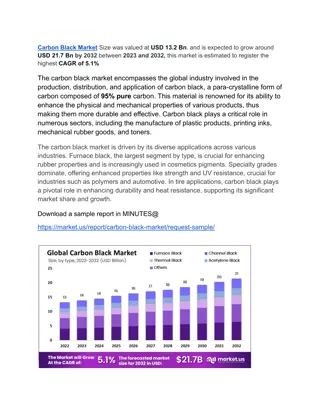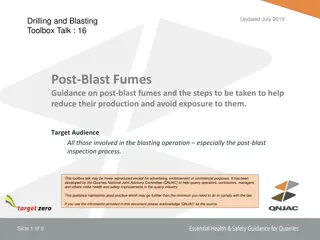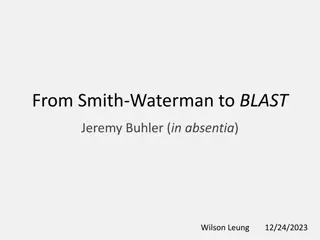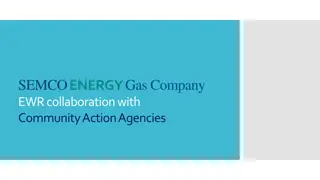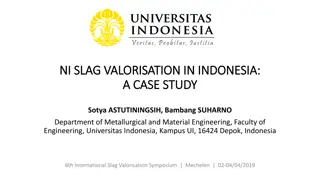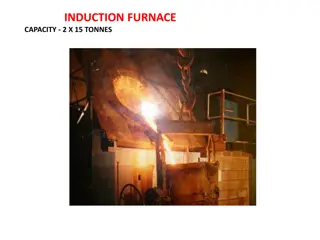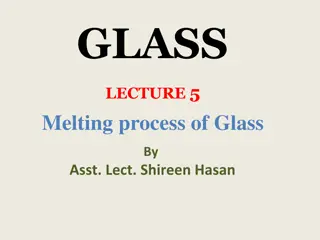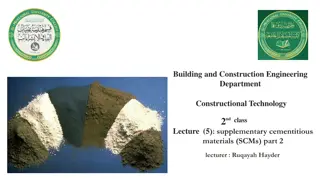The Blast Furnace The Blast Furnace
The blast furnace is a key component in the extraction of iron from its ores. This process involves reducing iron oxides to liquid iron through a series of reactions inside the furnace. Discover how iron is extracted efficiently using coke and limestone in this detailed explanation.
Download Presentation

Please find below an Image/Link to download the presentation.
The content on the website is provided AS IS for your information and personal use only. It may not be sold, licensed, or shared on other websites without obtaining consent from the author.If you encounter any issues during the download, it is possible that the publisher has removed the file from their server.
You are allowed to download the files provided on this website for personal or commercial use, subject to the condition that they are used lawfully. All files are the property of their respective owners.
The content on the website is provided AS IS for your information and personal use only. It may not be sold, licensed, or shared on other websites without obtaining consent from the author.
E N D
Presentation Transcript
The Blast Furnace The Blast Furnace By Chan, Sam and Elly
What is a Blast Furnace? What is a Blast Furnace? The purpose of a blast furnace is to reduce and convert iron oxides into liquid iron called "hot metal". The blast furnace is a huge, steel stack lined with refractory brick. Iron ore, coke and limestone are put into the top, and preheated air is blown into the bottom.
Why does Iron have to be extracted in a Blast Furnace??? Iron can be extracted by the blast furnace because it can be displaced by carbon. This is more efficient method than electrolysis because it is more cost effective
The Method Three substances are needed to enable to extraction of iron from its ore. The combined mixture is called the charge charge: : Iron ore, haematite Iron ore, haematite - often contains sand with iron oxide, Fe2O3. Limestone Limestone (calcium carbonate). Coke Coke - mainly carbon The charge is placed a giant chimney called a blast furnace furnace. The blast furnace is around 30 metres high and lined with fireproof bricks. Hot air is blasted through the bottom. blast
Several reactions take place before the iron is finally produced... Oxygen in the air reacts with coke to give Oxygen in the air reacts with coke to give carbon dioxide: carbon dioxide: C(s) + O 2(g) CO2(g) The limestone breaks down to form carbon The limestone breaks down to form carbon dioxide: dioxide: CaCO3(s) CO2(g) + CaO(s) Carbon dioxide produced in 1 + 2 react with Carbon dioxide produced in 1 + 2 react with more coke to produce carbon monoxide: more coke to produce carbon monoxide: CO2(g) + C(s) 2CO(g)
ore to give molten iron: ore to give molten iron: The carbon monoxide reduces the iron in the The carbon monoxide reduces the iron in the 3CO(g) + Fe2O3(s) 2Fe(l) + 3CO2(g) form slag (calcium silicate): form slag (calcium silicate): The limestone from 2, reacts with the sand to The limestone from 2, reacts with the sand to CaO(s) + SiO(s) CaSiO3(l)
Both the slag and iron are drained from the bottom of the furnace. The slag is mainly used to build roads. The iron whilst molten is poured into moulds and left to solidify - this is called cast iron and is used to make railings and storage tanks. The rest of the iron is used to make steel.
Thank you for watching!!! Thank you for watching!!!
This powerpoint was kindly donated to www.worldofteaching.com http://www.worldofteaching.com is home to over a thousand powerpoints submitted by teachers. This is a completely free site and requires no registration. Please visit and I hope it will help in your teaching.









